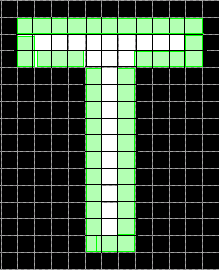bwpropfilt
Extract objects from binary image using properties
Syntax
Description
Objects in Binary Images
Objects in Connected Component Structures
Examples
Input Arguments
Output Arguments
Tips
bwpropfiltcalculates the properties of connected components using theregionpropsfunction.To filter on multiple image properties in an efficient way, call
bwpropfiltmultiple times using the same connected components structure.










